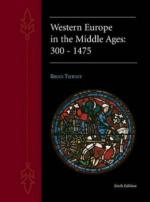|
This section contains 959 words (approx. 4 pages at 300 words per page) |

|
Influence. The geographical research of the English philosopher and scientist Roger Bacon in many ways anticipated by one century the new geography of the Renaissance. Although he did not invent map projection, his demand for a new mathematical way for making maps with the use of astronomical instruments certainly contributed to its development. Bacon's account on geography is found in his Opus Maius (Major Work, circa 1267) and in the Opus Tertium (Third Work, circa 1267). It is based on traditional sources such as Aethicus Ister's Cosmographia, Aristotle's De caelo et mundo and Meteorologia, Sallust's De bello jugurthino, Seneca's Naturales questiones, Pliny's Naturalis historia, Ptolemy's Almagest, Saint Jerome's De situ et nominibus locorum Hebraicorum, Paulus Orosius's Historia adversus paganos, Saint Isidore's Etymologiae and De natura rerum, the works of Al-Fraganus, Avicenna, and other Islamic writers, and the Bible and biblical commentaries. Bacon saw himself as...
|
This section contains 959 words (approx. 4 pages at 300 words per page) |

|




